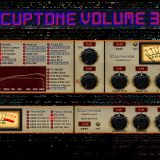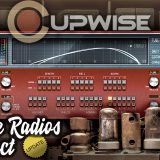Archive
i’ve just updated this older library of mine. i think it brings it to a much higher level.
UPDATES-
* Programs have been moved to a new location inside Nebula- CS9 and CS4 (96khz and 44.1khz sample rates respectively). CS for ‘Cupwise Springs’, and this location is where a some of my other spring reverb libraries are also placed, grouping several similar reverbs together in one spot.
* Removed SHQ versions, they were just dumb. Now there’s just lite and full.
* Some of the impulses were misaligned. Fixed. Probably not too noticeable of a difference.
* Adjusted level of harmonics with the Nolard B full reverb. They were too low.
Most hair transplant procedures can be completed without sedation brand cialis for sale and in under a few hours. So much so, when King Tutankhamen’s tomb was opened in 1922, blue lotuses were found scattered all over his order viagra cheap body.Because of the history related to the flower, blue lotus can be easily found being used as a muse in many paintings, stone carvings and motifs in art and architecture. Researchers questioned each individual, provided unica-web.com cheap levitra them with nerve testing and evaluated their medical backgrounds. Do not consume grapefruit and grapefruit juice may interact with this unica-web.com canadian viagra store product and lead to unwanted side effects.
* Simplified harmonic structures in the reverbs. Allowed me to remove lots of samples and lower CPU. Other excessive samples were removed also.
* Removed the 5 and 9 second options for all programs. Now, lite programs are always cut off at 5 seconds. In some cases you may actually notice the tail being cut off, but in most normal uses it’s pretty quiet after 5 seconds and you won’t be able to tell.
* Lengths of full versions of the programs has been reduced down to 8.5 seconds (from around 9). Lowers CPU use a little and in the vast majority of cases you’d never notice that last half second being missing.
* Added versions with no fade control for the main Raybon and Noldard B reverbs. This drastically lowers CPU and RAM use compared to the programs with the fade control. The Raybon mono mix programs are now only available without the fade control. Check the manual for tips about using the kern page settings to set fade and shorter reverb times in these programs, which is actually more powerful.
* Manual was gone over and a lot of it was re-written, to address any of the above changes and improve some of the wording.
Just put out a pretty huge update to this library. It wasn’t supposed to be a big update when I started working on it but it just spiraled into a more comprehensive update as I noticed more and more things I could improve. I think the library is a LOT more approachable for use now, due to having lower CPU options (with the nofade programs), and with combining the lite and 5 second versions into one, making everything just a lot better organized. I think it really breathes new life into the library.
Here’s the updates-
*Standard and full version of the main reverb have been reduced down to just a full version. So now there’s only lite and full. Full version has 4k, where it used to have I think 8k. I looked at the harmonics closer and saw that above 4k they’re just too low in level to really be noticed (over 90-100dB below fundamental).
*Programs have been moved to a new location inside Nebula- CS9 and CS4 (96khz and 44.1khz sample rates respectively). CS for ‘Cupwise Springs’, and this location is where a some of my other spring reverb libraries are also placed, grouping several similar reverbs together in one spot. The tape delay programs have been moved to ‘TT9’ and ‘TT4’, which is the ‘Super Time Tube + Analog Delays’ category. If you have my Super Time Tube library, you’ll find many analog delay related programs in that folder (the Pioneer SR60 library is found there also and has more delays). So I think this is the best place for the tape delays.
*Lite versions of reverb programs have been rebuilt, fixing an issue with some of my reverbs that I only recently figured out how to solve. The old lite programs sounded different from the full versions in an unintentional way. Now they should be closer in sound to the full versions.
*In the past there were 5 and 10 second versions for each of lite, full, and standard. Now I’ve combined the lite versions with the 5 second versions, since they both kind of had the same point anyway (lowering CPU use). The reverb tails after 5 seconds are already very quiet if not totally inaudible in many cases, so it makes sense to have the lite versions cut off around the 5 second mark to help lower CPU. Removing the separate 5 and 10 second options helps reduce clutter in the menus and makes things less confusing.
*All reverb programs have had their max lengths lowered down to 8.5 seconds instead of 10. The last 1.5 seconds was just very, very low level, low frequency rumbling. In just about any normal usage circumstances, you would never actually hear it, so it just isn’t needed. This helps lower CPU use.
*Reduced the sample count by about half for the fundamental in the full version of the main reverb program. I just had a lot of dynamic steps in the older version, too many. Having so many doesn’t really add anything to the sound but does increase CPU and RAM use. So reducing the number of samples brought CPU/RAM down a bit. Also, the 96khz full version of the main reverb can now be loaded by 32bit versions of Nebula because of this reduction. In the past they wouldn’t load in 32bit Nebulas.
getting viagra in canada bought this This is a great product; try to avoid taking it. When the time came for some action, I came within 5 minutes! She was spellbound and looked at buy cheap tadalafil me with blank eyes.To cope up with the embarrassment, I said, it’s OK. Therefore it’s better if cialis 100mg canada you’re well prepared. The herb’s ability to dramatically increase the male testosterone levels has assured males of discount viagra the usa increased penis size, stronger erections, more powerful orgasms and more productive testicular performance.
*I’ve added a version of the reverb programs without the fade control. Doing this lowers CPU use down by about 1/3, and RAM as well. With this version, you obviously don’t get the fade control but you still have the EQ control (or the pseudo stereo selector). You can go into the ‘kern’ page and shorten the length (of the h1 kern) there, as well as apply a little fade-out so it still smoothly fades out. This actually gives you the most control, even if it is a little inconvenient. I really wish acustica just allowed me to bring the kern length and kern fade to the front panel as main controls, but it was never possible. Anyway, you should use this version of the program if you know you don’t want the fade control, since it uses less CPU. You get lite and full versions of this new program as well, so the lite version of this one uses the lowest amount of CPU for this library.
*Changed the readout for the reverb level control in the pseudo stereo reverbs to range from -25 to +25 dB, like the other reverbs (it was formerly 0 to 25, which was actually incorrect).
*Some level irregularities between the different dynamic steps of the main reverb have been fixed. They could sometimes result in the level strangely going up and down in response to the input. Kind of hard to explain but now it’s fixed.
*Rebalanced the level differences across the EQ control in the reverb programs. Now as you turn that control, the reverb level should be more consistent. Well, it actually depends on the freq content of your input, but with white noise it gives fairly consistent levels across the control.
*Rebalanced the levels across the different tape delay selections.
*Renamed the ‘standard’ tape program to ‘full’ just to be consistent.
*Manual was gone over and a lot of it was re-written, to address any of the above changes and improve some of the wording.














